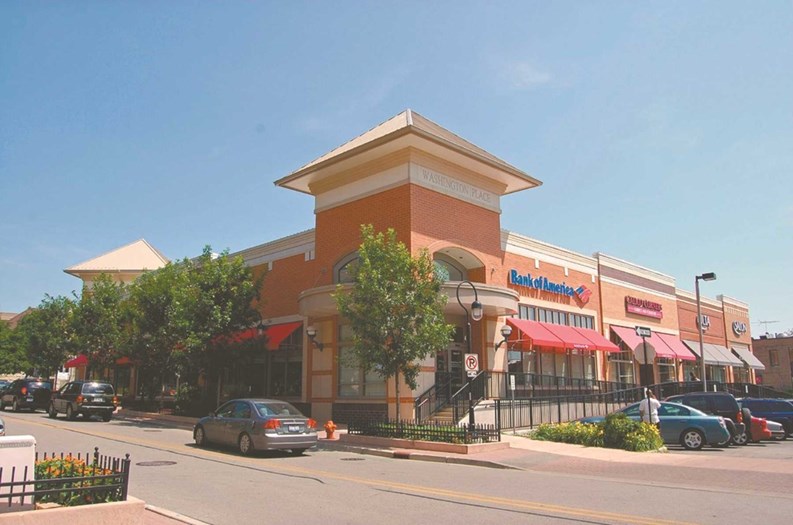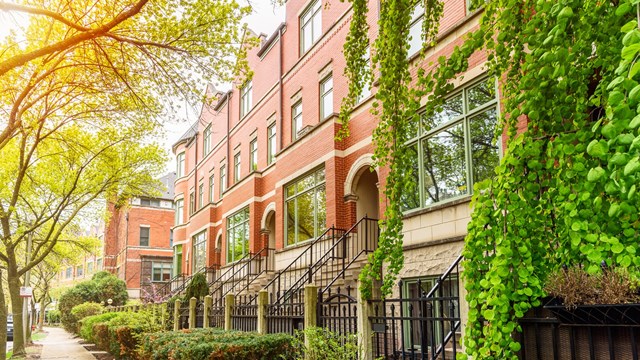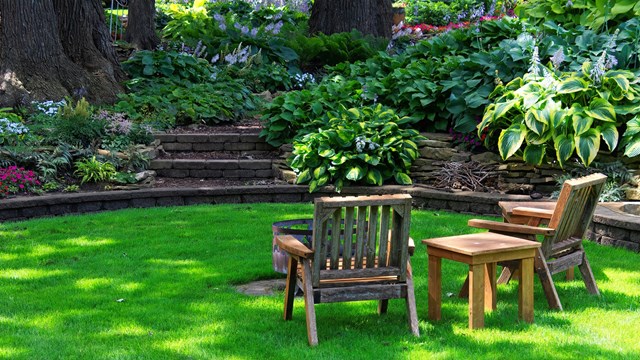Coming in second is often derided as being, well, second-best, but when your town is voted the No. 2 best place to live in the entire nation by Money magazine—as Naperville was in 2006—second place is something to be extremely proud of. Indeed, the city has made the publication's Top Five list three times in the last five years.
Naperville straddles the line between DuPage and Will counties. As of the 2010 census, the city was home to some 141,853 residents, roughly 100,000 of whom reside on the DuPage County side, with the remaining 45,000 in Will County. It is the fifth largest city in Illinois behind Chicago, Aurora, Rockford, and Joliet.
From its roots as a small farming town, Naperville has made and remade itself into the affluent city it is today, splitting the difference between urban and suburban enclave.
Early Days
In July of 1831, after a voyage across three of the Great Lakes, the schooner Telegraph landed on the west bank of the DuPage River near the hardscrabble settlement that would one day be called Chicago. On board were Joseph Naper, his wife, his mother, his brother and sister, and both their spouses, along with a handful of other settlers.
The Telegraph's crew and passengers came to found Naper's Settlement, and by the following year, over 100 other settlers had joined them. By 1834, the Settlement was a stage-coach stop on the road from Chicago to Galena. After DuPage County was split from Cook County in 1839, Naper's Settlement became the DuPage county seat, a distinction it held until 1868. By 1857, the population of Naper's Settlement topped 2,000, and was incorporated as the Village of Naperville.
Naperville Now
Naperville remained a predominantly rural community until the late 1960s when the population rose sharply thanks to the construction of major traffic arteries serving the area. The construction of the East-West Tollway (now known as the Ronald Reagan Memorial Tollway) and North-South tollways and Chicagoland's urban sprawl over the past two decades has nearly quadrupled the city's size, bringing corporations, jobs, and wealth to the area.
With many distinct neighborhoods and homes ranging from condos to historic landmarks, Naperville's housing stock is as diverse as the homeowners seeking to live there. Many neighborhoods also have active homeowner associations which work together with the Naperville Area Homeowners Confederation.
According to the Live Downtown Naperville Partnership (LDNP), "For the past several years, Naperville has experienced substantial residential redevelopment in a number of neighborhoods in and around its downtown area. In fact, based on the activity that has taken place in downtown Naperville since 2000, the LDNP believes over $2 billion may be invested in new residential construction in and around downtown Naperville during the next ten years. The mission of the LDNP is to promote responsible residential development in the downtown Naperville area, protecting its architectural integrity while highlighting the charm that defines the downtown Naperville lifestyle."
Downtown Naperville has also become a destination for shoppers. According to the Downtown Naperville Alliance, "Naperville has grown from a small settlement of 180 residents in 1831 to 142,000 residents in 2009. While this growth is impressive, what's more impressive is the way Naperville has maintained superior quality of life and a caring volunteer spirit among its residential and business communities. Naperville residents are proud of their heritage. Early business leaders believed in their community and that same spirit is evident today in Naperville's thriving downtown shops, restaurants and booming entertainment district with their world-class fine arts center."
The town's history is further enshrined by the Naperville Heritage Society and the Naperville Park District, which was established in 1969 to preserve some of the community's oldest buildings. Naperville celebrated the 175th anniversary of its 1831 founding in 2006 with citywide festivities and comemorative events.
Visitors to Naperville—more than 135,000 of them per year—check out Naper Settlement, a 12-acre outdoor living-history musuem established in the 1960s that tells the story of how life changed throughout the 19th century for the people who lived there. Then there's the award-winning Naperville Riverwalk, often referred to as the "crown jewel" of the city's park system. The walk was built and dedicated in 1981 during Naperville's Sesquicentennial (150th) anniversary. According to the Naperville Park District, "The park includes covered bridges, fountains, lush landscaping and distinctive shepherd’s crook light poles aptly tie Naperville’s historic past as the oldest settlement in DuPage County to the city’s present." The Riverwalk is active all year round wth arts events, walk-a-thons, festivals and special events.







Leave a Comment